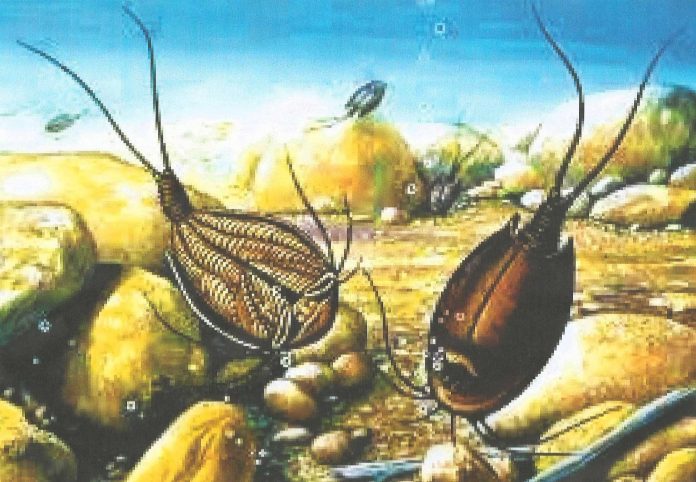Article by Etnia Nativa call us 592 2702 and book your experience!
One and every living species rejoices if there was a significant rainy season. This blessing counts for man, plants and animals as well, since rain is very scares on this lonely rock. Water burst in to life and happiness on this arid Caribbean island which is notable everywhere. During this season dry river beds will carry the much needed liquid into fields, collecting holes and natural pound before it sinks in to the dry ground, evaporates or reaches the sea.
In our story this week we will talk about a bizarre looking prehistoric creature which emerges of very tiny eggs and starts to swim around in these seasonal pounds of our desert island, egg which can stay dormant for many decades awaiting the downpour. These tiny creatures of approximately 4.5 to 5 cm from head to tail will reach matureness in 2 to 3 weeks and will live about 6 to 12 weeks in the wild and 10 to 13 weeks in captivity. Locals know these tiny creatures under the name Hobo hobo or Hobi in Papiamento.
However many people confuses these with tadpoles, but these animals do not have nothing to do with frogs or any other amphibians present on the island but are prehistoric fresh water crustaceous or shrimps known as Triops or popularly as tadpole shrimp in English. Most Triops are hermaphrodites, meaning they can fertilize their own eggs.
The one we find on Aruba is called Triops longicaudatus by scientists. It looks much like a miniature horseshoe crab, whit an elongated, segmented body, a flattened shield-like olive or brownish colored carapace which covers most part of its body, whit two long filaments on the end tail and whiskers like filaments on its face. Despite their potential contribution in mosquito control, limited evidence for their effectiveness in mosquito larval control is available. However, Triops are considered a pest in some countries.
It`s believed that egg could be carried by water fowl, in the mud that stick to their feet when feeding in pound and seasonal lake.
When I was a young kid I used to collect tadpoles and Hobo hobo that where abundant in every small hole or zone that could hold water after a seasonal downpour, but today they are really scares or not present, believing that development and the consequence erosion has scraped away much of the top soil contain the tiny eggs
To get to know more about Aruba’s origins, flora, fauna and cultural heritage, we recommend this private cultural encounter session that has been educating participants for decades. Mail us at etnianativa03@gmail.com or Whatsapp + 297 592 2702 for an amazing native hour.















